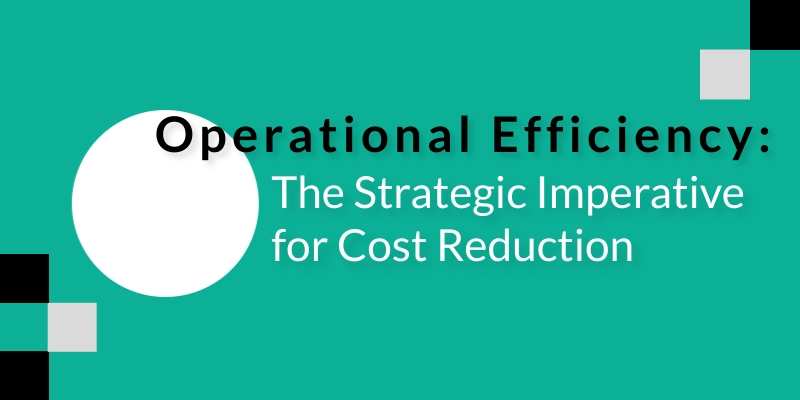Empowering Change: Business Strategies for a Sustainable Future
The battle against climate change has reached a critical juncture, where it is absolutely essential for all stakeholders to participate. The ramifications of global warming are becoming increasingly apparent, with challenges such as rising sea levels, extreme weather events, and the potential extinction of various plant and animal species. These consequences are not only alarming but also have devastating implications for the long-term survival of our planet and its inhabitants.
To combat this global crisis, businesses must step up and play a significant role in reducing carbon emissions. Taking action to minimize their environmental impact is not merely an option but a necessity. Fortunately, there are numerous strategies that companies can adopt to achieve this goal while simultaneously optimizing their processes and technology for cost efficiency.
An impactful approach revolves around implementing energy-efficient practices throughout organizations. This can be accomplished through upgrades to energy-efficient equipment, proper insulation of buildings, and encouraging employees to adopt energy-saving habits. While seemingly small changes individually, they collectively yield substantial energy savings and a notable reduction in carbon footprint.
Companies should strive to cultivate a culture of sustainability by promoting eco-friendly behaviors among employees. This may encompass initiatives such as advocating telecommuting or providing incentives for carpooling or utilizing public transportation systems. Through reductions in unnecessary travel and commuting, businesses further curtail their emissions output while actively contributing towards a greener future.
Investing in research and development aimed at developing innovative green technologies can yield remarkable results. By harnessing technological advancements, organizations discover new methods for waste minimization, improved efficiency, and reduced environmental impact. Notably benefiting both the planet and enterprises themselves by offering opportunities to gain a competitive advantage in an ever-growing market seeking sustainable solutions.
The urgency of combating climate change demands immediate action. Companies must acknowledge their responsibility and implement strategies to decrease their carbon footprint. Through the adoption of renewable energy sources, energy-efficient practices, fostering a culture of sustainability, and investing in green technologies, enterprises can make a substantial difference in mitigating the effects of climate change. The time for collective action is now, and together we can ensure a greener and more sustainable future for generations to come.
Measure and Analyze Your Carbon Footprint
Reducing your carbon footprint has become increasingly important in today’s society, as the effects of climate change continue to threaten our planet. To effectively address this issue, it is crucial to have a clear understanding of the level of emissions that your company releases. This is where measuring your carbon footprint becomes essential. By accurately assessing the amount of greenhouse gases and other pollutants that your operations generate, you can identify the areas that require immediate attention and implement effective carbon-reduction strategies. Fortunately, there are numerous software tools available, such as online carbon calculators, that can facilitate this process. These tools enable you to calculate your carbon emissions with ease, providing you with a comprehensive overview of your environmental impact. Once armed with this information, you can delve into the analysis of your carbon footprint to gain valuable insights into the specific areas where improvements can be made. Whether it involves optimizing processes, adopting more eco-friendly technologies, or implementing energy-saving measures, the analysis allows you to pinpoint precise actions that can lead to significant reductions in carbon emissions. Taking these steps not only benefits the environment but also contributes to your company’s sustainability goals, enhances its reputation, and potentially yields cost savings. Therefore, understanding and measuring your carbon footprint serves as a critical starting point for any business aspiring to mitigate its impact on the environment and embrace a greener future.
Reduce Energy Consumption
Energy consumption is a crucial factor that contributes to a company’s carbon footprint. This is particularly evident in the areas of heating, lighting, and air conditioning, which often rely heavily on electricity. However, there are several straightforward measures that businesses can adopt to actively reduce their energy consumption. For instance, switching to energy-efficient light bulbs and electronics not only helps to conserve energy but also lowers electricity costs in the long run. Incorporating natural and renewable energy sources, such as solar panels or wind turbines, provides a sustainable and eco-friendly alternative to traditional energy sources. Another effective way to minimize energy usage is through the installation of better insulation, which helps to regulate temperature levels and reduce the need for excessive heating or cooling. Implementing programmable thermostats also proves to be advantageous, as they allow for precise control over temperature settings and optimize energy usage accordingly. Additionally, there is a myriad of technology available to help measure and regulate the use and consumption of heating and electricity under the Internet of Things or IOT umbrella which we will cover later in this article.
Achieving energy efficiency is a key aspect of sustainability for any company. By implementing measures such as using energy-efficient technologies, embracing renewable energy sources, improving insulation, utilizing programmable thermostats, promoting remote working, and adopting transport policies, businesses can actively contribute to the reduction of their carbon footprint. These initiatives not only benefit the environment but also have the potential to lower operating costs, increase employee satisfaction, and enhance the overall reputation of the company as a responsible corporate citizen.
Optimize Your Supply Chain
Optimizing your supply chain is an essential strategy for companies that are committed to reducing their carbon footprint and promoting sustainability. By focusing on various aspects of the supply chain, such as sourcing, transportation, and logistics, companies can significantly minimize the emissions associated with these activities.
In addition to your global or offshore suppliers, one effective way to optimize the supply chain is by sourcing from multiple local suppliers. This can not only reduce the distance that products need to travel but also supports the local economy. By sourcing locally, companies can reduce transportation emissions associated with long-distance shipments and improve your supplier options during times of unexpected gaps or shortages.
Another crucial aspect of supply chain optimization is adopting more environmentally friendly modes of transport. Instead of relying solely on trucks or planes, companies can explore alternatives such as rail or sea transportation, depending on the nature of their products. These alternatives often emit fewer greenhouse gases, contributing to a greener supply chain.
Consolidating shipments is another effective method to optimize the supply chain. By combining multiple shipments, companies can reduce the frequency of transportation, resulting in fewer emissions. Not only does this approach led to cost savings, but it also has a positive environmental impact.
Additionally, reducing transport emissions can be achieved by using lighter packaging materials. By choosing packaging materials that weigh less, companies can decrease the overall weight of shipments, leading to reduced fuel consumption and decreased emissions during transportation.
To further improve the efficiency of their supply chains, companies can enhance their logistical operations. This can be achieved by optimizing routes and using advanced planning systems to ensure that shipments are delivered with minimal distance traveled and in the most fuel-efficient manner possible. Companies can consider utilizing shared transportation options, which enable multiple businesses to share shipment space and reduce the number of vehicles on the road.
By implementing these strategies, companies can make significant strides in minimizing their carbon footprint and promoting sustainability throughout their supply chains. With a focus on optimizing sourcing, transportation, and logistics, businesses can contribute to a cleaner and more environmentally friendly future.
Embrace Technology
With the rapid advancement of technology in recent years, companies now have the opportunity to embrace cutting-edge solutions that not only streamline their operations but also contribute to the greater cause of reducing carbon emissions. One such technology is Internet of Things (IoT) sensors, which can be employed to effectively monitor energy consumption and make optimizations accordingly. By enabling the control of lighting and air conditioning systems, these sensors ensure that energy is used sparingly and efficiently. Moreover, they provide valuable insights into areas where energy-saving measures can be implemented, further reducing the carbon footprint of businesses.
Another impactful way that technology can help mitigate environmental damage is through the adoption of virtual meetings and remote work. By leveraging teleconferencing, e-mail, and instant messaging platforms, companies can significantly limit the need for business travel, thereby minimizing transportation emissions. This not only results in substantial cost-saving measures but also acts as a crucial step towards building a more sustainable business model. Collaborative tools and software promote innovation and enhance collaboration, negating the necessity for frequent in-person meetings and excessive business trips. As a result, travel-related carbon emissions are curtailed, positively impacting the environment.
Incorporating these innovative technological solutions not only aids companies in achieving their environmental targets but also provides them with a competitive edge in the market. By demonstrating a clear commitment to sustainability, businesses can attract eco-conscious consumers, gaining their loyalty and trust. Furthermore, a reduced carbon footprint facilitates compliance with regulatory and legal requirements addressing environmental responsibility.
Technology has emerged as a powerful ally in the fight against climate change. With IoT sensors optimizing energy consumption and virtual platforms enabling remote work and reducing business travel, companies can proactively decrease their carbon footprint. By embracing these innovative solutions, businesses can simultaneously promote sustainability, enhance their reputation, and contribute to the global effort of building a greener future.
Reducing your carbon footprint requires a multifaceted approach. Measuring your carbon footprint, reducing energy consumption, optimizing your supply chain, and embracing technology will go a long way toward reducing carbon emissions and cutting costs. Companies that prioritize carbon reduction efforts will not only reduce their carbon footprint and contribute to climate change mitigation but also enhance their brand reputation, attract more customers who value sustainability, and take advantage of cost savings associated with optimization and efficiency. By taking action, companies can protect our planet and build a more sustainable future. If you would like to reduce your carbon footprint, connect with one of our consultants today.







